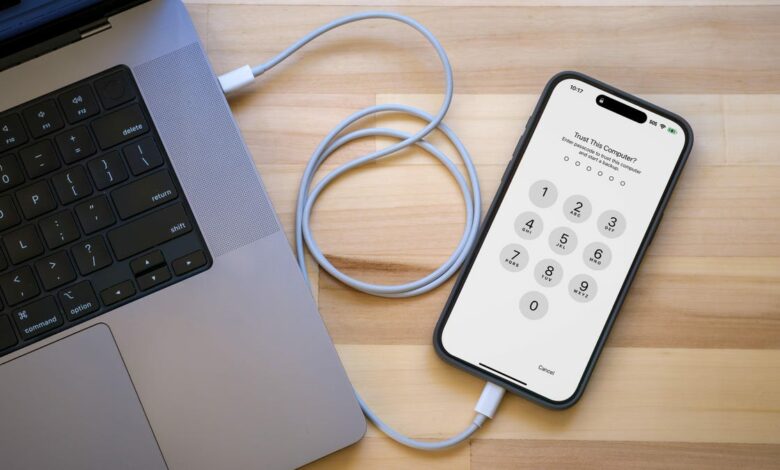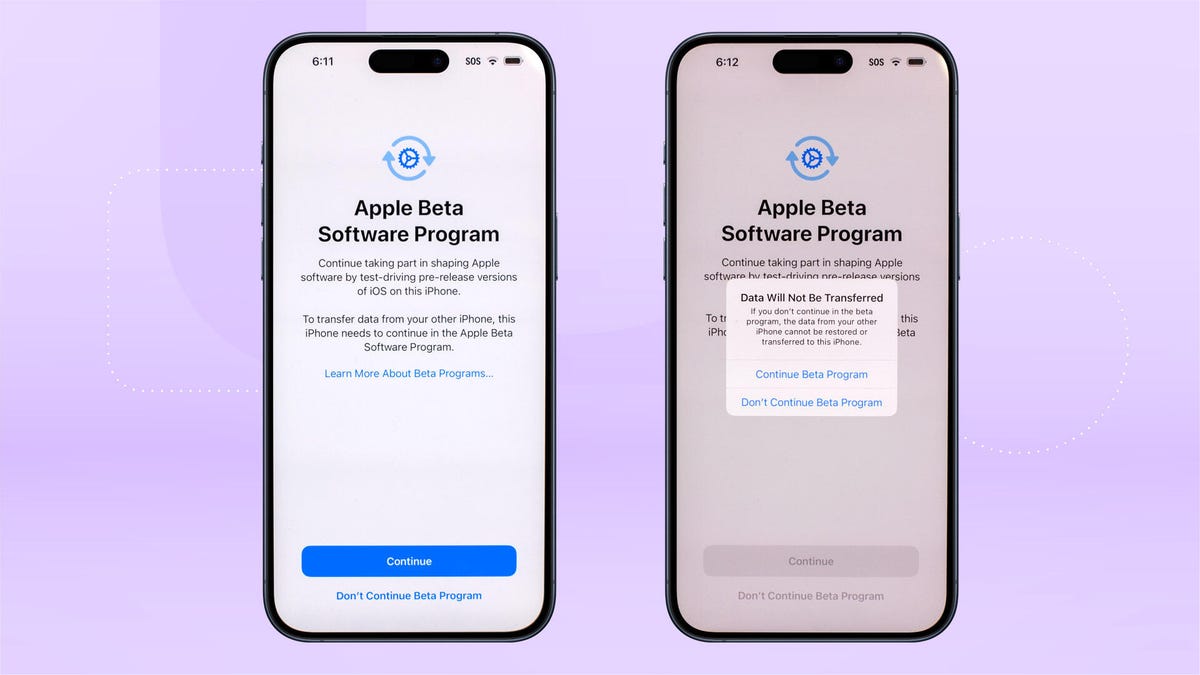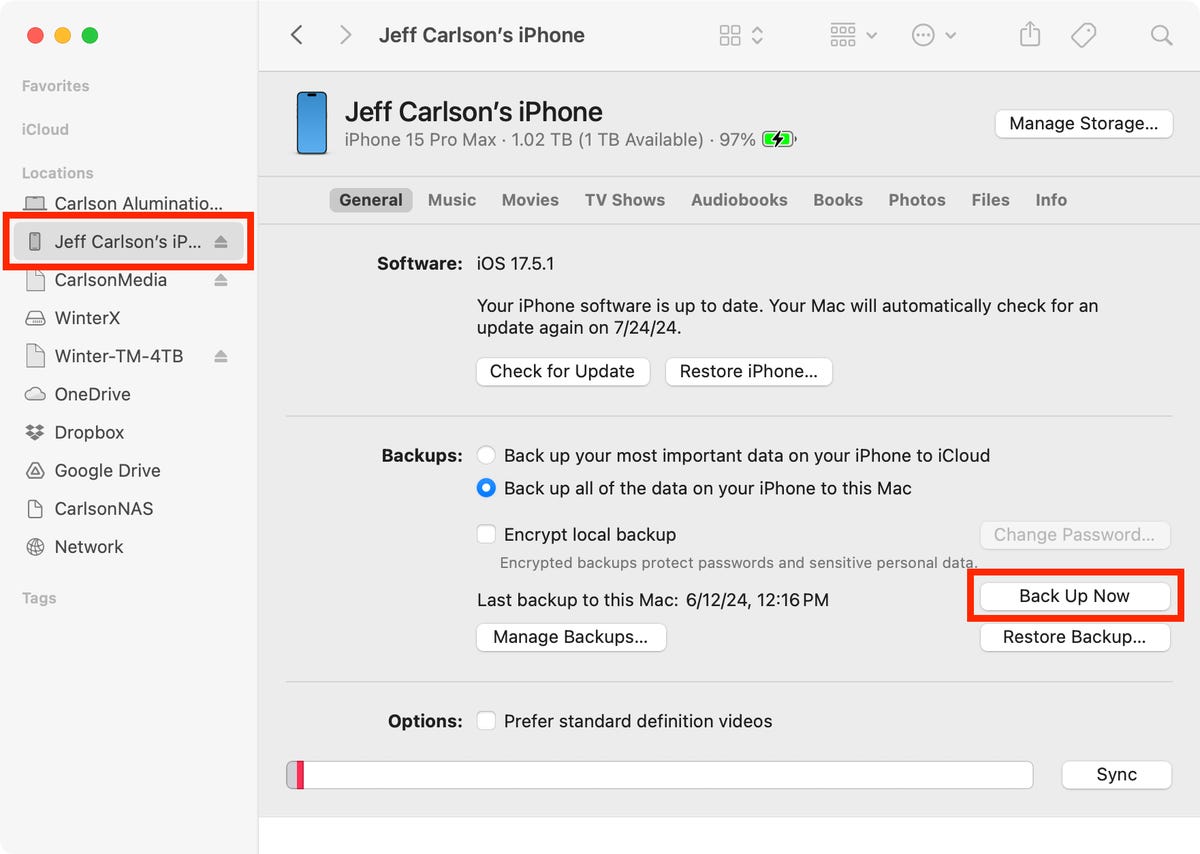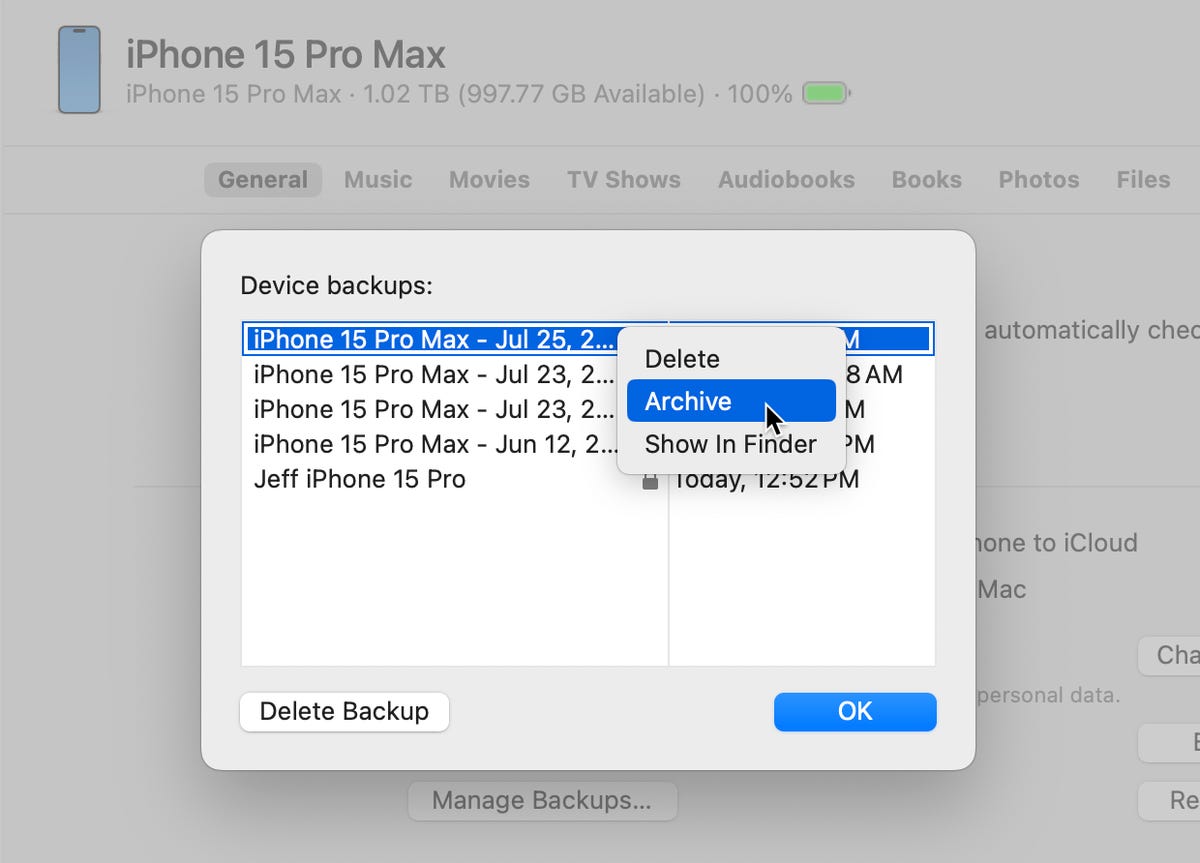Before installing iOS 18, you must properly back up your iPhone





If you have an iPhone dating back to the iPhone XR, you’ll soon be able to install the latest version of iOS 18. In addition to announcing the new iPhone 16 and iPhone 16 Pro models at its September event, Apple marked September 16 — Monday — as the official release date for iOS 18. That means now is the time to prep your current phone, whether you’re looking to upgrade its software or swap it for a new iPhone 16. And to do that, you’re going to need a good backup of your data.

But not just any backup: You want a specific kind of backup that will make your life a lot easier in the unlikely event that you need to roll back to iOS 17. With this rock-solid backup, you’ll feel more secure using new iOS 18 features, like improvements to SMS messaging, improved Apple Maps, and mirroring your iPhone from a Mac in macOS Sequoia.
More from the Apple event
Why an archive is essential before installing a new version of iOS
You’re probably used to using iCloud Backup to maintain a regular fallback for your data. It runs in the background (when you’re sleeping and charging your device) and requires the least amount of backup friction, as long as you have enough iCloud drive space available. Check out Settings > [your name] > iCloud > iCloud Backup and turn on Back up this iPhone if it is not already active.
However, when you upgrade to a full version of iOS, like from iOS 17 to iOS 18, an iCloud backup introduces a problem: You can’t restore from that cloud backup if you roll back to iOS 17. And unfortunately, iCloud only keeps the most recent backup — you can’t choose from previous backup iterations. If you try to use an iOS 18 cloud backup to restore back to iOS 17, you’ll get an error. (Creating an archive is also an important step when installing iOS betas.)
That’s why it’s important to make a backup of your computer.

iOS will warn you if you try to restore from an iCloud backup created in iOS beta.
Should I encrypt the local backup?
Before creating this archived backup, you should decide whether you want to enable any of the options, Encrypt local backup. For security, this feature encrypts the data to prevent anyone with access to your computer from accessing it. This option also backs up sensitive information, such as saved passwords and personal data in the Health and Fitness apps.
The downside is that you have to create a separate password for the backup. If you forget or lose that password, the entire backup is useless. Therefore, you should write down that password somewhere where you can easily find it. In the context of creating an iOS 17 backup as a fallback for installing the iOS 18 beta, you’ll have to decide whether that’s an acceptable tradeoff.
Create a local iPhone archive on your Mac
To create this type of backup, all you need is disk space and some patience:
- Connect your iPhone to your Mac.
- Open a new Finder window (choose File > New Finder Windowor press Command-n).
- In the sidebar on the left, select your iPhone under Locations.
- If you want to encrypt the data, click the Local backup encrypt Check box and set a password.
- Click on the General tab Make a backup now.
- Click Manage Backups.
- Right-click (or Control-click) the backup you created and choose Archive.

Create an archive backup of a connected iPhone to the computer (MacOS shown here).
Marking the backup as an archive prevents it from being overwritten by the next local backup or automatically deleted if your Mac runs out of space.

Set the backup as an archive.
Make a local iPhone archive on Windows
The iTunes app is still the primary way to work with a connected iPhone on Windows. Open iTunes and do the following:
- Connect the iPhone to your Windows computer.
- Click in iTunes on the iPhone button at the top left.
- Click Summary.
- If you want to encrypt the data, click the Local backup encrypt option and set a password.
- Click Make a backup now.
- Click Backups.
- Right click on the backup you made and choose ArchiveThis extra step prevents the backup from being overwritten by the next local backup or from being automatically deleted if the computer runs out of space.
With an archive in order, you can use the iOS 18 beta safely, knowing that you can quickly get your iPhone back into service if something comes up that warrants a return to iOS 17.




